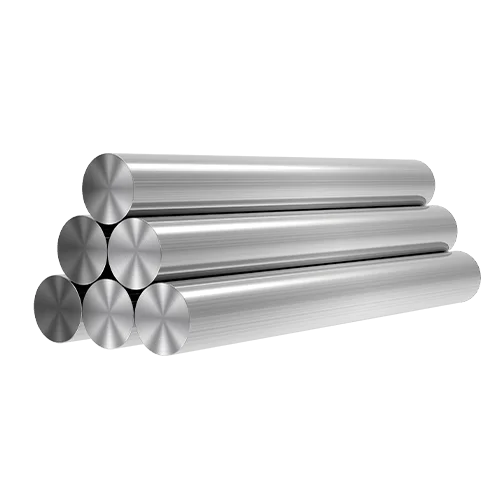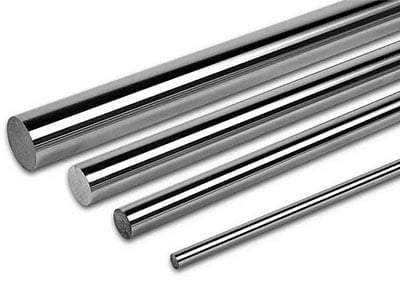Introduction
Stainless steel is a versatile and widely used material known for its corrosion resistance, strength, and durability. It is employed in various industries, from construction and automotive to medical devices and kitchenware. To fully appreciate the value and applications of stainless steel, it’s essential to understand its mechanical properties. This comprehensive guide will explore the key mechanical properties of stainless steel, their significance, and how they influence the material’s performance in different applications.
What are Mechanical Properties?

Definition and Importance
Mechanical properties refer to the physical characteristics of a material that define its behavior under various conditions. These properties include strength, hardness, ductility, toughness, and elasticity. Understanding these properties is crucial for selecting the right material for specific applications, ensuring safety, performance, and longevity.
Key Mechanical Properties of Stainless Steel
The primary mechanical properties of stainless steel include:
- Tensile Strength: The maximum stress that a material can withstand while being stretched or pulled before breaking.
- Yield Strength: The stress at which a material begins to deform plastically.
- Hardness: The resistance of a material to deformation, particularly permanent deformation, scratching, cutting, or abrasion.
- Ductility: The ability of a material to deform under tensile stress, often measured by the material’s ability to be stretched into a wire.
- Toughness: The ability of a material to absorb energy and plastically deform without fracturing.
- Elasticity: The ability of a material to return to its original shape after being stretched or compressed.
Exploring the Mechanical Properties of Stainless Steel
Tensile Strength
Tensile strength is a critical property for materials used in structural applications. It measures the maximum amount of tensile stress a material can take before failure. Stainless steel generally exhibits high tensile strength, making it suitable for heavy-duty applications where resistance to breaking under tension is required.
Types of Stainless Steel and Their Tensile Strength
- Austenitic Stainless Steel: Known for its high tensile strength and excellent corrosion resistance. Common grades include 304 and 316.
- Ferritic Stainless Steel: Offers good tensile strength and is often used in automotive and industrial applications. Common grades include 430 and 409.
- Martensitic Stainless Steel: Characterized by high tensile strength and hardness. Common grades include 410 and 420.
Yield Strength
Yield strength indicates the stress at which a material begins to deform plastically. Beyond this point, the material will not return to its original shape when the stress is removed. Stainless steel generally has a lower yield strength compared to its tensile strength, allowing it to withstand significant stress before permanent deformation occurs.
Hardness
Hardness is an essential property for materials subjected to wear and abrasion. It is measured using various scales, such as Rockwell, Brinell, and Vickers. Stainless steel’s hardness varies depending on its grade and treatment. For example, martensitic stainless steels are typically harder than austenitic and ferritic grades.
Ductility
Ductility measures a material’s ability to undergo significant plastic deformation before rupture. Stainless steel is known for its excellent ductility, especially austenitic grades, which can be drawn into wires or formed into complex shapes without breaking.
Toughness
Toughness is the ability of a material to absorb energy and deform plastically without fracturing. It combines strength and ductility. Stainless steel’s toughness makes it ideal for applications where impact resistance is critical, such as in structural components and safety equipment.
Elasticity
Elasticity refers to the ability of a material to return to its original shape after deformation. Stainless steel exhibits good elasticity, allowing it to withstand temporary stresses without permanent deformation. This property is vital for components subjected to cyclic loading, such as springs and fasteners.
Comparing Mechanical Properties of Different Stainless Steel Grades
To better understand the mechanical properties of stainless steel, let’s compare some common grades:
| Property | 304 (Austenitic) | 316 (Austenitic) | 430 (Ferritic) | 410 (Martensitic) | 420 (Martensitic) |
|---|---|---|---|---|---|
| Tensile Strength (MPa) | 515-720 | 515-720 | 450-550 | 450-650 | 650-850 |
| Yield Strength (MPa) | 205-355 | 205-355 | 205-310 | 275-380 | 345-450 |
| Hardness (HB) | 70-95 | 70-95 | 70-95 | 100-180 | 150-220 |
| Ductility (% Elongation) | 40-60 | 40-60 | 22-30 | 15-25 | 10-20 |
| Toughness (J) | High | High | Moderate | Moderate | Low |
| Elasticity (GPa) | 193-200 | 193-200 | 200-220 | 200-215 | 200-215 |
Applications of Stainless Steel Based on Mechanical Properties

Construction and Architecture
Stainless steel’s high tensile strength and toughness make it suitable for construction and architectural applications. It is used in building frameworks, bridges, and facades where strength and durability are essential.
Automotive Industry
In the automotive industry, stainless steel is used for exhaust systems, trim, and structural components. Its corrosion resistance and ability to withstand high temperatures make it ideal for these applications.
Medical Devices
Stainless steel’s biocompatibility, combined with its mechanical properties, makes it a preferred material for medical devices and surgical instruments. It is used in implants, surgical tools, and equipment that require high strength and resistance to corrosion.
Aerospace Industry
In aerospace applications, stainless steel is used for components that require high strength, toughness, and resistance to extreme temperatures. It is employed in engine parts, structural components, and fasteners.
Food and Beverage Industry
Stainless steel is widely used in the food and beverage industry due to its corrosion resistance and ease of cleaning. It is used in equipment such as tanks, pipes, and food processing machinery.
Conclusion: Mechanical Properties of Stainless Steel
Understanding the mechanical properties of stainless steel is crucial for selecting the right grade and ensuring optimal performance in various applications. Stainless steel’s unique combination of strength, ductility, toughness, hardness, and elasticity makes it a versatile and reliable material for industries ranging from construction and automotive to medical devices and aerospace. By comparing the mechanical properties of different grades, you can make informed decisions and achieve the best results for your projects.
FAQ
What is the most common grade of stainless steel used in construction?
The most common grade of stainless steel used in construction is 304, an austenitic stainless steel known for its high tensile strength, corrosion resistance, and good formability.
How does heat treatment affect the mechanical properties of stainless steel?
Heat treatment can significantly alter the mechanical properties of stainless steel. For example, annealing can increase ductility and reduce hardness, while hardening can increase strength and hardness. The specific effects depend on the grade of stainless steel and the type of heat treatment applied.
Why is stainless steel preferred for medical devices?
Stainless steel is preferred for medical devices due to its biocompatibility, high strength, corrosion resistance, and ease of sterilization. Grades like 316L are commonly used in implants and surgical instruments.
Can stainless steel be used at high temperatures?
Yes, stainless steel can be used at high temperatures. Austenitic grades like 304 and 316 have excellent high-temperature properties, making them suitable for applications such as exhaust systems and heat exchangers.
What factors should be considered when selecting a stainless steel grade?
When selecting a stainless steel grade, consider factors such as mechanical properties (tensile strength, yield strength, hardness, ductility), corrosion resistance, ease of fabrication, and the specific application requirements.
